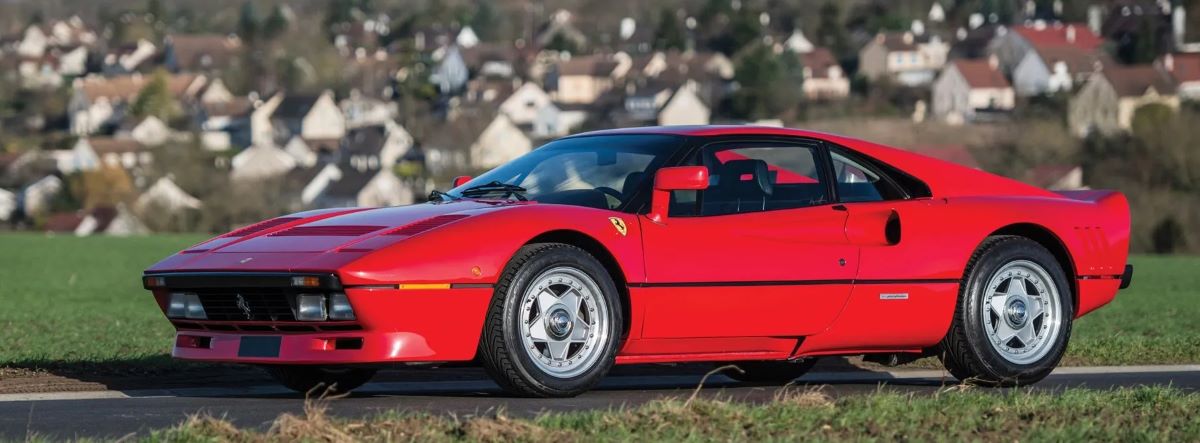
Announced by Enzo Ferrari in September 1983, and unveiled at the Geneva Motor Show in March 1984, the GTO (also known unofficially with the 288 prefix) sparked off a wave of enthusiasm. The legendary name, the stunning styling by Pininfarina, the engine with its seemingly inexhaustible power (2.8 litres and 8 cylinders) and the widespread use of composite materials, made the GTO the closest thing to a racing car on the market. To meet customer demand, 272 were built instead of the planned 200: all were sold before production began.
In the early years of Ferrari history most road cars produced were limited series, which gave way to more series type production in the late fifties, with the last of the limited production models being the 365 California in 1966-67. The GTO, introduced at the 1984 Geneva Salon, heralded a return to the low volume production series. Initially the reason was not to provide a select few clients with an exclusive form of transportation, but to satisfy the two hundred unit build number for homologation purposes as a Group “B” competition car. However, the regulations changed so here was a competition orientated car with nowhere to compete. There was no need to worry, as the car had created such a sensation at the Geneva Salon that the planned production run was soon sold out. In fact there were more buyers than cars available, and eventually the total production run became 272 examples. The model was built between 1984 – 1986, in the odd number series chassis number range 52465 to 58345. The official model designation was solely GTO, although most people refer to it as the “288 GTO” to differentiate it from the 250 GTO model in conversation, as this legend is frequently referred to as simply the GTO. The 288 appellation refers to the total cubic capacity of the engine and number of cylinders, 2.8 litres with 8 cylinders. Obviously, the “GTO” model name was a retro touch referring to the legendary 250 GTO of the early sixties, to which it was intended to be the spiritual successor in GT racing, albeit stillborn as already noted.
The GTO was the real starting point for the “Supercar Syndrome”, showing that there was a market for a low volume production, extreme performance sports car, at almost any cost! Before people had even taken delivery of their GTO the contract had been sold on, sometimes more than once, and with each change of hands came a healthy profit for the vendor. Through the remainder of the eighties there was a knock on effect to the more mundane (in elitist terms) models. New models were introduced by various manufacturers to capture a slice of the action, and soon virtually the whole classic and sports car market was caught up in a whirlwind of spiralling prices, that eventually had nowhere to go but down. When they did, it was suddenly and with a bang, leaving many speculators with assets of massively negative collateral.
The GTO really captured the buyer’s imagination, although visually it was nothing startlingly different from the mainstream Ferrari eight cylinder models of the period, looking like a 308 that had been on a course of steroids, with more bulbous wheel arches, a lower stance and bigger spoilers. The revisions gave it a more aggressive appearance, and under the skin there was muscle enough to pack a powerful punch, complimenting the brawny exterior.
Even though they were visually similar both inside and out, and both were powered by a V8 engine, that was the extent of the similarities between the GTO and the 308 series. Although based on the 308 series silhouette, the GTO shared very few common components, the wheelbase was longer, the mid mounted engine was placed longitudinally in the chassis, and the majority of body panels were constructed from composite materials or resin mouldings. The major visual differences were as follows. There were more bulbous front and rear wings, and the trailing edges of the rear wings had triple vertical exhaust air slots (a reference point to the front wings of the sixties 250 GTO). The front valance spoiler was deeper, housing paired rectangular driving lights in the radiator grille extremities, the tail had a pronounced lip spoiler, and the door mirrors stood on tall stalks. Also the multi slotted engine lid was hinged at the trailing edge, rather than being forward hinged in unit with the sail panels on the 308 models.
The mid mounted engine was a 90 degree V8 unit fitted longitudinally, with the forward end so close to the cabin bulkhead to optimise weight distribution, that a service hatch was provided in the bulkhead for maintenance. This was the first longitudinally mounted V8 engine fitted in a Ferrari production road car, and also the first to be fitted with twin turbochargers. The total cubic capacity was 2855cc, with a 80mm x 71mm bore and stroke, a compression ratio of 7.6:1, and factory type reference F 114 B 000. It had four valves per cylinder, twin overhead camshafts per bank, each with its own toothed drive belt, dry sump lubrication, with twin IHI turbochargers feeding intake air via a pair of Behr intercoolers at 0.8 bar, coupled to a Weber-Marelli IAW combined ignition/fuel injection system, to provide a claimed power output of 400 bhp at 7000rpm. The differential assembly was mounted on the back of the engine in unit with the rear mounted five speed synchromesh gearbox, with its removable end cover for ease of ratio changes, a throwback to its original competition intent.
The bodies were mounted on a 2450mm wheelbase chassis, which was 110mm greater than that of the 308 models, but the overall length was 5mm less, due to a reduced rear overhang. The chassis had factory reference numbers F 114 AB 100, with the construction following the Ferrari principle of a tubular steel chassis frame with cross bracing, and sub structures, to support the engine, suspension, and ancillary equipment, incorporating a safety roll over hoop in the cabin section. The wheels were unique to this model, five spoke “star” pattern magnesium alloy Speedline split rims 16″ x 8J and 16″ x 10J at the front and rear respectively, each with a single central retaining nut on a Rudge hub. They covered large ventilated disc brakes with twin hydraulic circuits, and servo assistance. Independent suspension via tubular steel wishbones, coil springs, and hydraulic shock absorbers was provided, together with front and rear anti roll bars.
A quirk of the marketing was that “you could have the car in any colour you liked, as long as you liked red”! Internally the client had little more choice than with the external paint colour, there was the choice of all black leather seats or alternatively orange cloth centre cushions could be provided. There were also the options of electric windows, air conditioning, and a radio.
Specifications and Features
Engine
- Type…………………………….rear, longitudinal 90° V8
- Bore/stroke…………………..81 x 71 mm
- Unitary displacement…….356.88 cc
- Total displacement………..2855.08 cc
- Compression ratio…………7.6 : 1
- Maximum power…………..294 kW (400 hp) at 7000 rpm
- Power per litre………………140 hp/l
- Maximum torque…………..496 Nm (51 kgm) at 3800 rpm
- Valve actuation……………….twin overhead camshafts per bank, four valves per cylinder
- Fuel feed……………………….Weber-Marelli electronic injection, twin turbos
- Ignition…………………………Weber-Marelli electronic, single spark plug per cylinder
- Lubrication……………………dry sump
- Clutch……………………………twin-plate
Chassis
- Frame…………………………..tubular steel
- Front/Rear suspension…..independent, unequal-length wishbones, coil springs over telescopic shock absorbers, anti-roll bar
- Brakes…………………………..discs
- Transmission…………………5-speed + reverse
- Steering………………………..rack-and-pinion
- Fuel tank……………………….capacity 120 litres
- Front tyres…………………….225/55 VR 16
- Rear tyres……………………..265/50 VR 16
Bodywork
- Type…………………………….two-seater berlinetta
- Length………………………….4290 mm
- Width…………………………..1910 mm
- Height………………………….1120 mm
- Wheelbase…………………….2450 mm
- Front track……………………1559 mm
- Rear track…………………….1562 mm
- Weight…………………………1160 kg (dry)
Performance
- Top speed…………………….305 km/h
- Acceleration
0-100 km/h………………….4.9 sec
0-400 m……………………..12.7 sec
0-1000 m…………………….21.8 sec
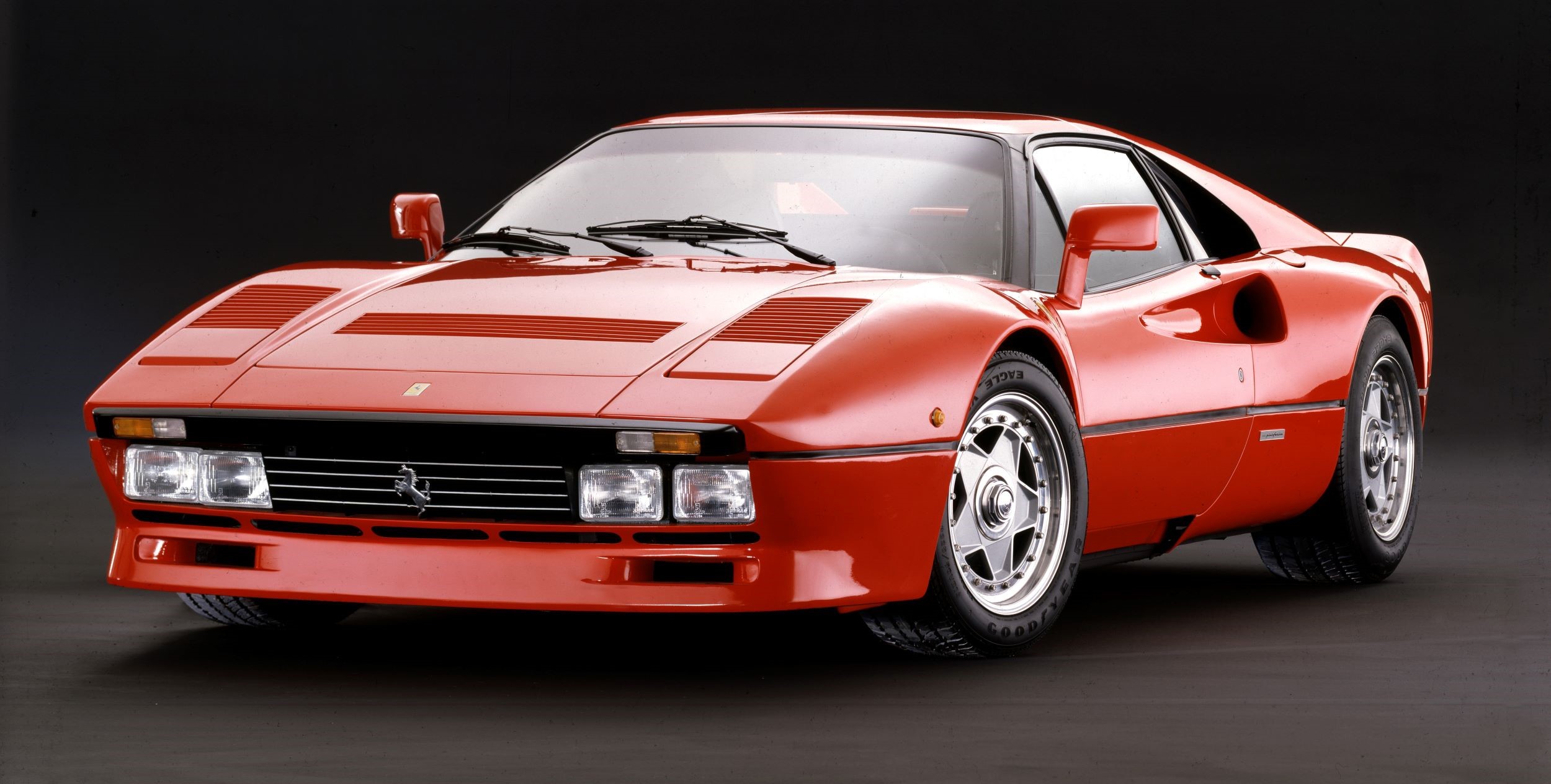
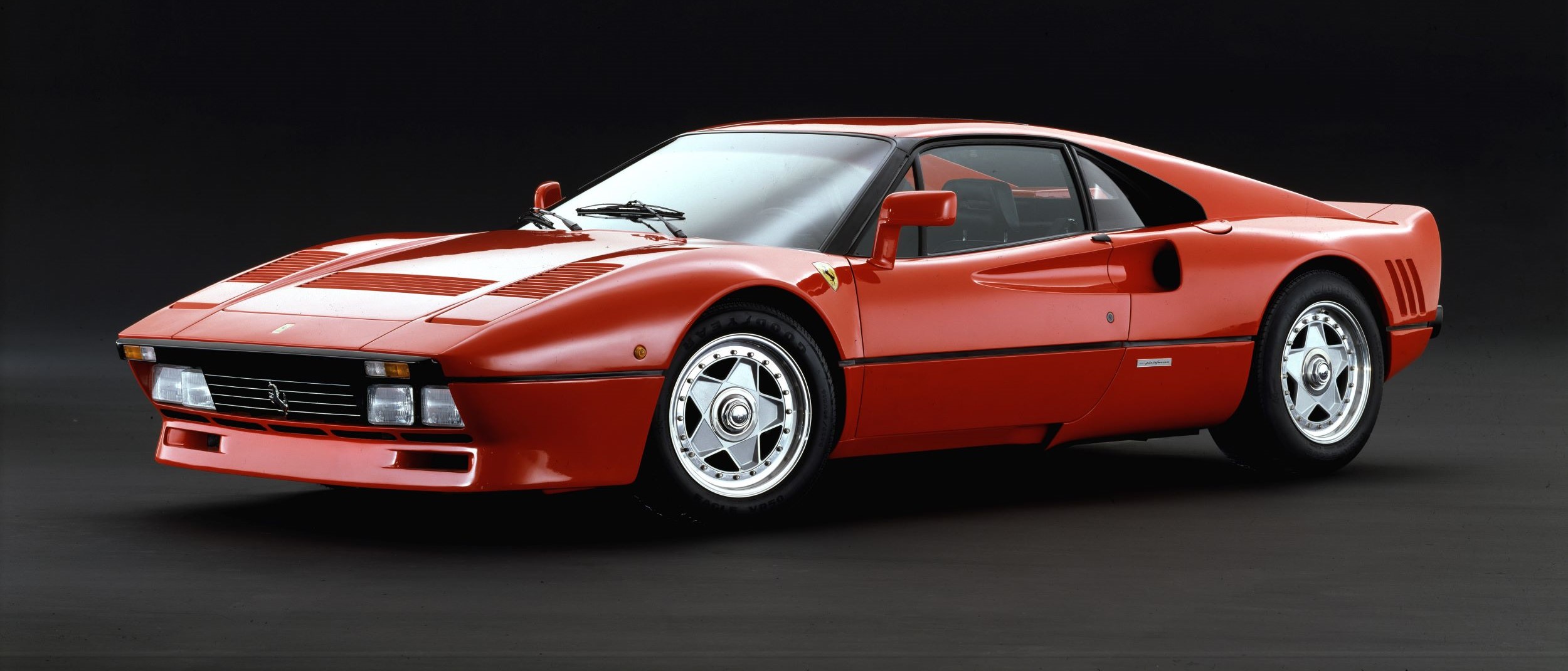
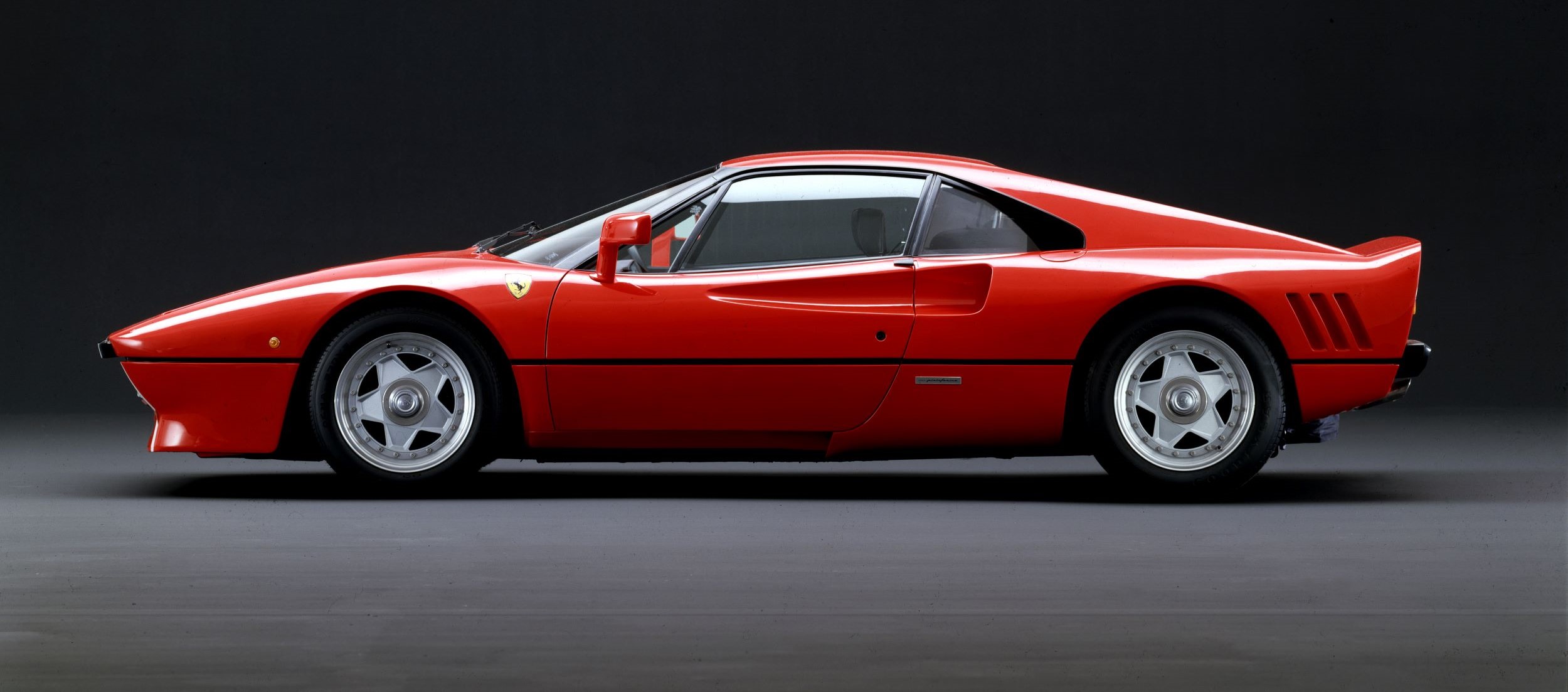
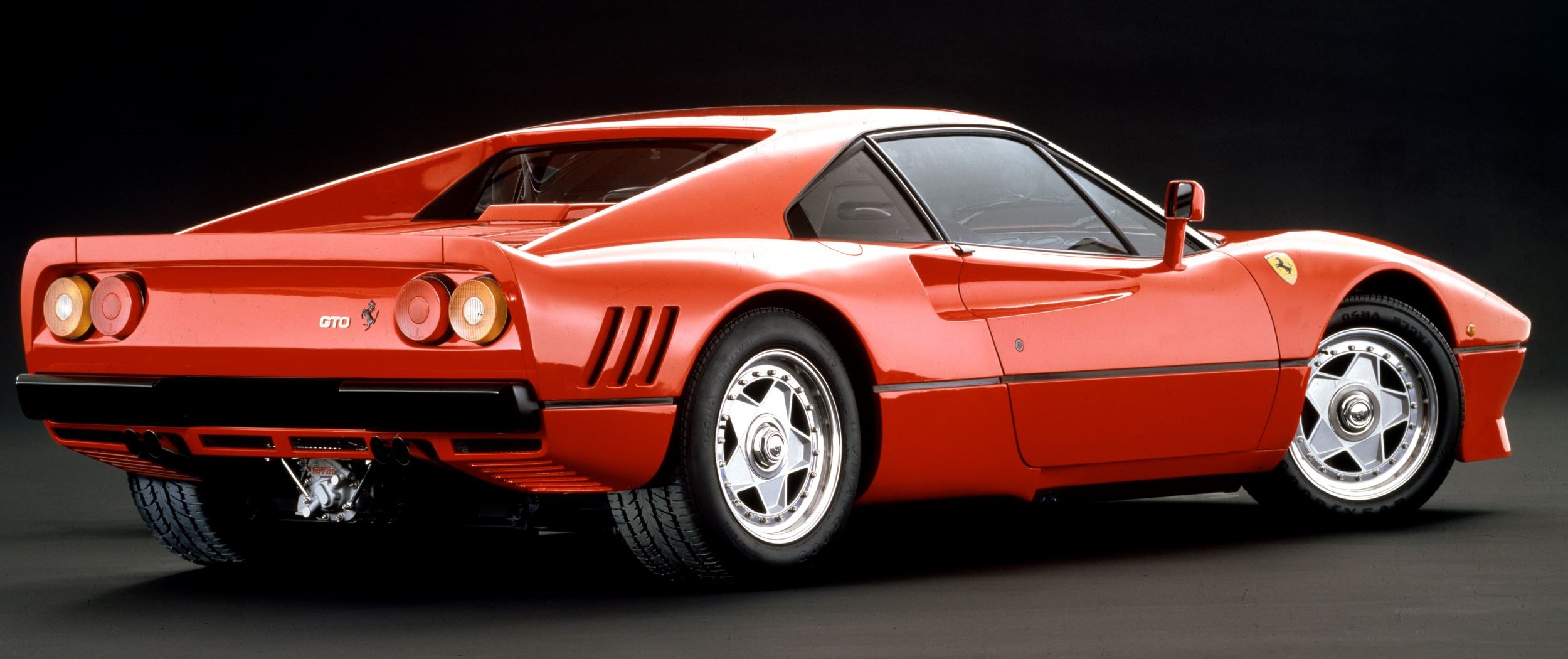
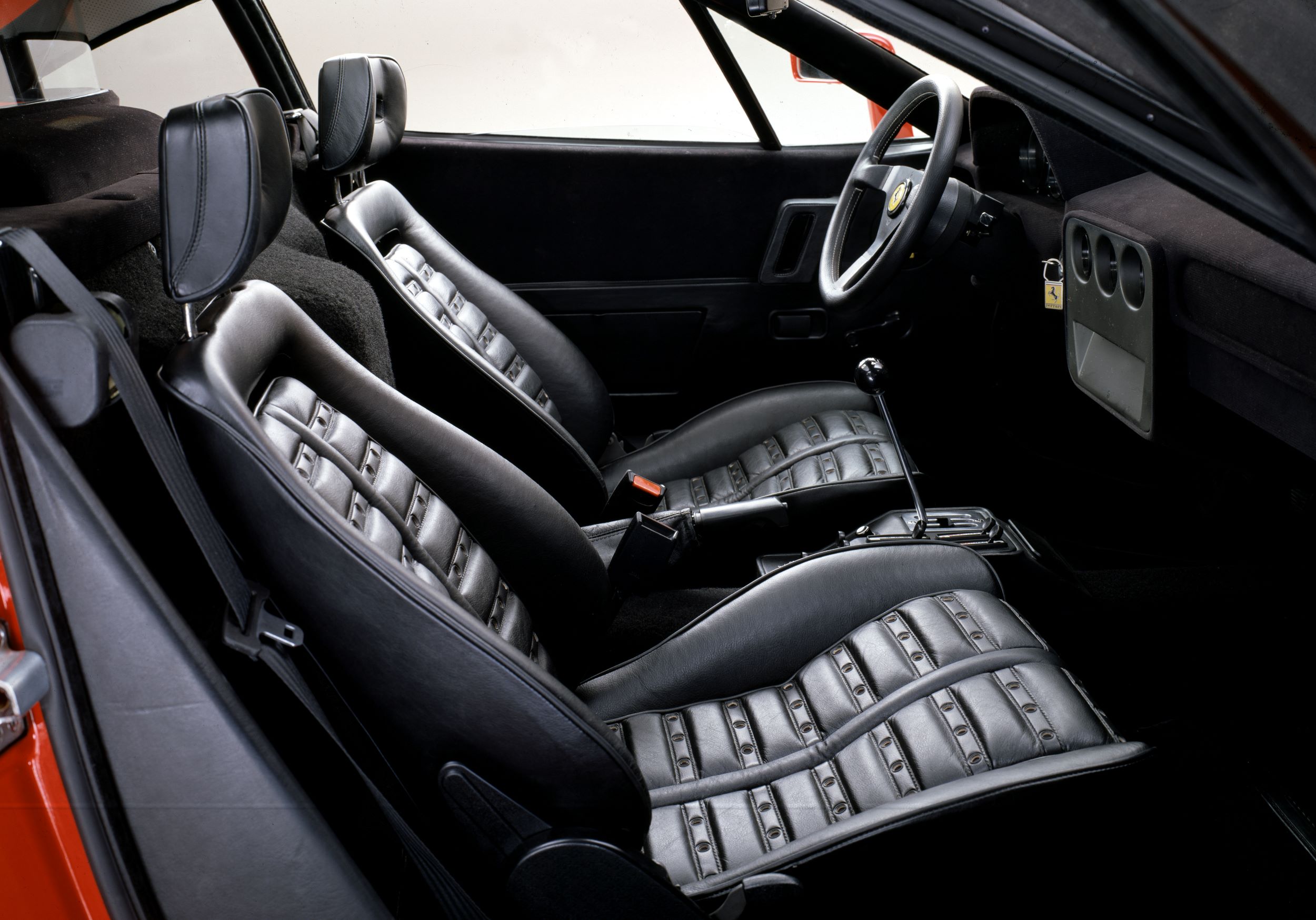

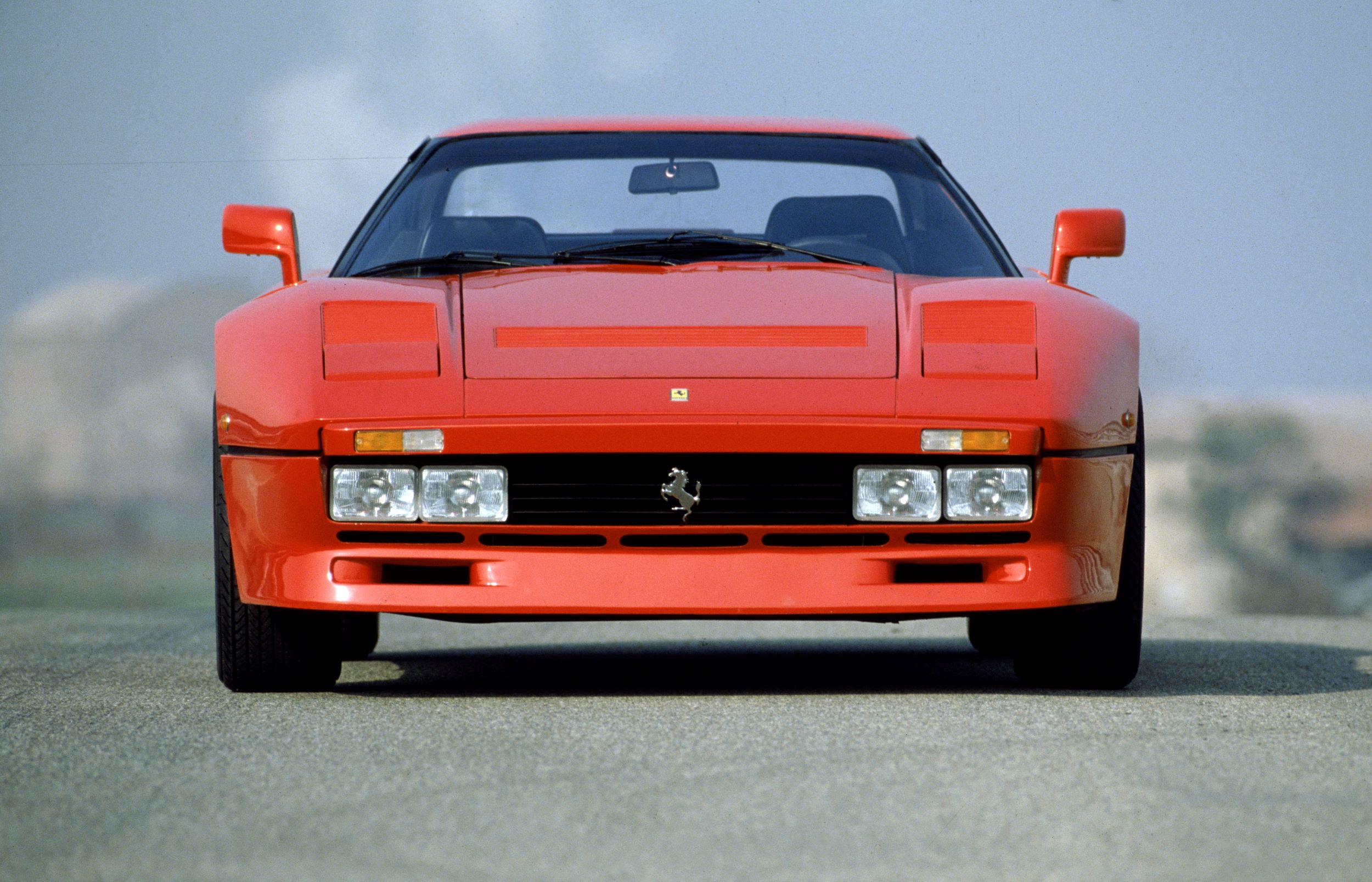

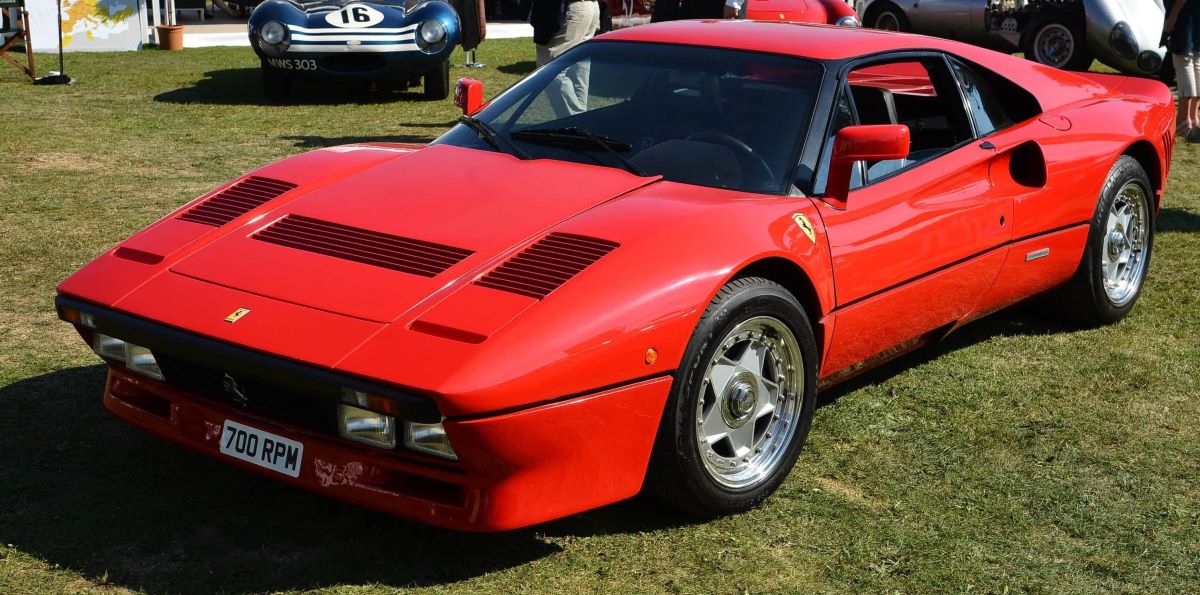


You must be logged in to post a comment.